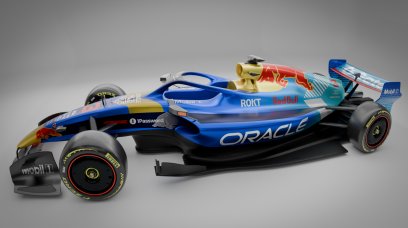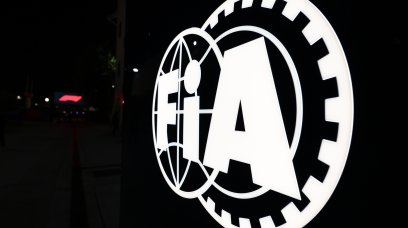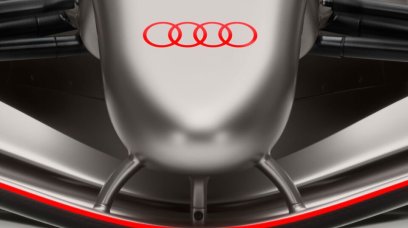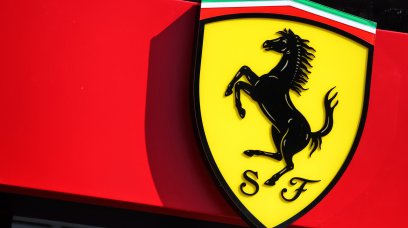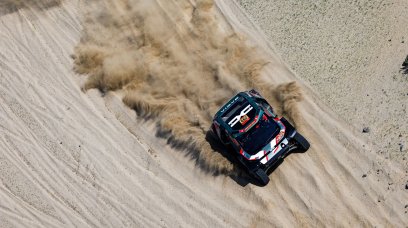Alpine's announcement last October that Pierre Gasly would join the team to partner Esteban Ocon in 2023 means F1 has its first all-French driver line-up since Olivier Panis and Franck Lagorce drove for Ligier in 1994. Over the course of the sport's history, F1 has had many other one-nation driver pairings, and RacingNews365.com has trawled through the archives to bring you the five most recent.
Lewis Hamilton and George Russell, Mercedes, 2022-present
Ocon and Gasly won't be the only compatriots to team up in 2023, as Britons Lewis Hamilton and George Russell are set for another year alongside each other at Mercedes, following Russell's move over from Williams in 2022. (Main picture) Though the W13 was a step down from Mercedes' previous championship-winning form, the Silver Arrows still finished third in the Constructors' standings, with Russell taking a fine maiden victory in Brazil. Mercedes closed the gap to the leading cars throughout 2022, and few would bet against Hamilton and Russell being among the frontrunners in 2023.
Michael Schumacher and Nico Rosberg, Mercedes, 2010-2012
F1's previous one-nation driver pairing also involved Mercedes, as the Silver Arrows hired Germans Michael Schumacher and Nico Rosberg for the team's much-vaunted return to F1. Though all eyes were on Schumacher as he made a high-profile return to the sport he had initially left in 2006, the seven-time World Champion generally flattered to deceive on his comeback, scoring only a single podium finish across his three-year stint. In the other car, Rosberg quietly impressed, outscoring his illustrious teammate in each of their three seasons together, and taking his maiden Grand Prix win in China in 2012. While Schumacher retired for good at the end of 2012, Rosberg stayed on to partner new teammate Lewis Hamilton, in an aggro-ridden pairing that would dominate the start of F1's turbo-hybrid era.
Lewis Hamilton and Jenson Button, McLaren, 2010-2012
Many thought 2009 World Champion Jenson Button was mistaken in his decision to move to McLaren for 2010 to partner Lewis Hamilton, who had established himself as the main man at Woking since bursting onto the scene in 2007. However, Button and Hamilton turned out to be very evenly matched as teammates, with Hamilton winning ten races to Button's eight across their three-year stint together. Though Hamilton had the edge in 2010 and 2012, Button was McLaren's star man in 2011, and the elder Briton actually outscored Hamilton over the three years as a whole. Hamilton would leave McLaren for Mercedes in 2013, marking the prelude to almost unbroken success with the Silver Arrows. Button, meanwhile, would remain with the Woking squad until the end of his F1 career in 2016, save for a one-off return at Monaco in 2017.
Takuma Sato and Yuji Ide/Sakon Yamamoto, Super Aguri, 2006
After a poor 2006, Takuma Sato lost his seat at Honda at the end of the year. The Japanese company wanted to keep Sato in F1, however, and so it was that Super Aguri was hastily assembled as a de facto Honda 'B-team'. Using a 2002 Arrows as the basis for its chassis, the 2006 Super Aguri was predictably slow, but Sato earned plaudits for his efforts in limited machinery. The same cannot be said of his teammate Yuji Ide, however. The 31-year-old had little racing experience outside Japan, was consistently off the pace, and had his Super License revoked after four races. Frenchman Franck Montagny filled in for a few events, before an all-Japanese combo returned later in the year with the arrival of Sakon Yamamoto, who was at least closer to Sato's pace than Ide had been.
Christijan Albers and Robert Doornbos, Minardi, 2005
In their last season before morphing into Toro Rosso, perennial backmarkers Minardi hired Dutchman Christijan Albers for his Grand Prix debut. After Patrick Friesacher's money dried up halfway through the season, the Austrian was replaced by Robert Doornbos, creating F1's first and so far only all-Dutch driver line-up. Albers would go on to race for the Midland outfit that quickly became known as Spyker, before a lack of funding saw him unceremoniously dropped midway through 2007. Doornbos, meanwhile, had to be content with a third driver role at Red Bull for much of 2006, but the Dutchman did get to race in the last three Grands Prix of that season after Christian Klien was sacked. Doornbos finished all three races outside the points in what would prove to be his final Grand Prix outings.
Most read

